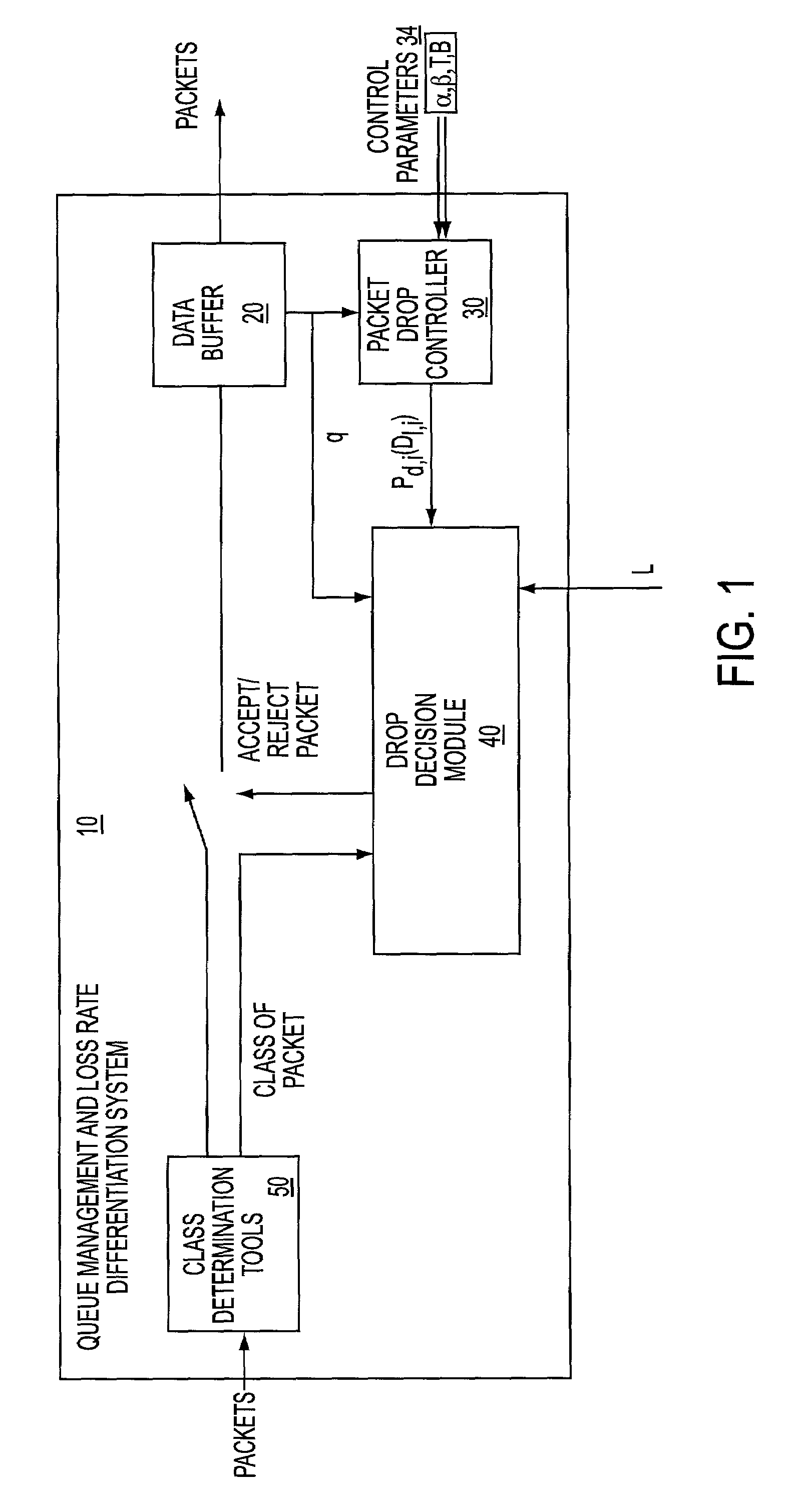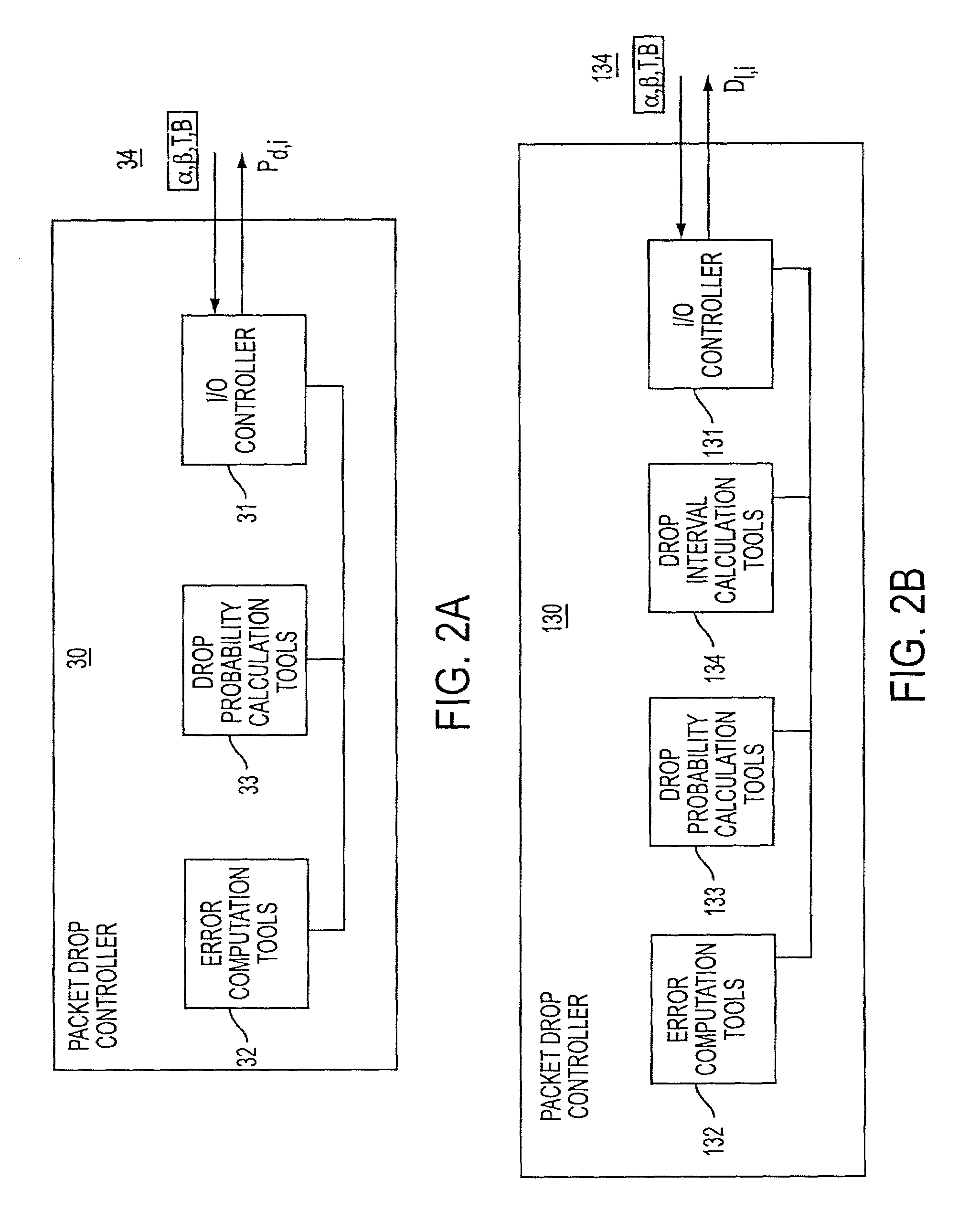Queue management mechanism for proportional loss rate differentiation
- Summary
- Abstract
- Description
- Claims
- Application Information
AI Technical Summary
Benefits of technology
Problems solved by technology
Method used
Image
Examples
Embodiment Construction
)
[0041]Referring to FIG. 1, there is shown a queue management and loss rate differentiation system 10. The queue management and loss rate differentiation system 10 preferably includes or associates with a data buffer 20 for storing data packets. Class determination tools 50 classify incoming packets into classes prior to allowing the packets to enter the data buffer 20. Each class has an associated weighting factor. A packet drop controller 30 receives selected network control data and performs calculations for forwarding to a drop decision module 40. The drop decision module 40 determines whether to drop the packet or to send the packet to the data buffer 20. The aforementioned components are described in additional detail below.
[0042]The packet drop controller 30 includes an I / O controller 31 for receiving parameters 34 such as a control gain parameters ∝. The control gain parameter ∝ controls the reaction speed and stability of the queue management system 10. In a preferred embod...
PUM
 Login to View More
Login to View More Abstract
Description
Claims
Application Information
 Login to View More
Login to View More - R&D
- Intellectual Property
- Life Sciences
- Materials
- Tech Scout
- Unparalleled Data Quality
- Higher Quality Content
- 60% Fewer Hallucinations
Browse by: Latest US Patents, China's latest patents, Technical Efficacy Thesaurus, Application Domain, Technology Topic, Popular Technical Reports.
© 2025 PatSnap. All rights reserved.Legal|Privacy policy|Modern Slavery Act Transparency Statement|Sitemap|About US| Contact US: help@patsnap.com



